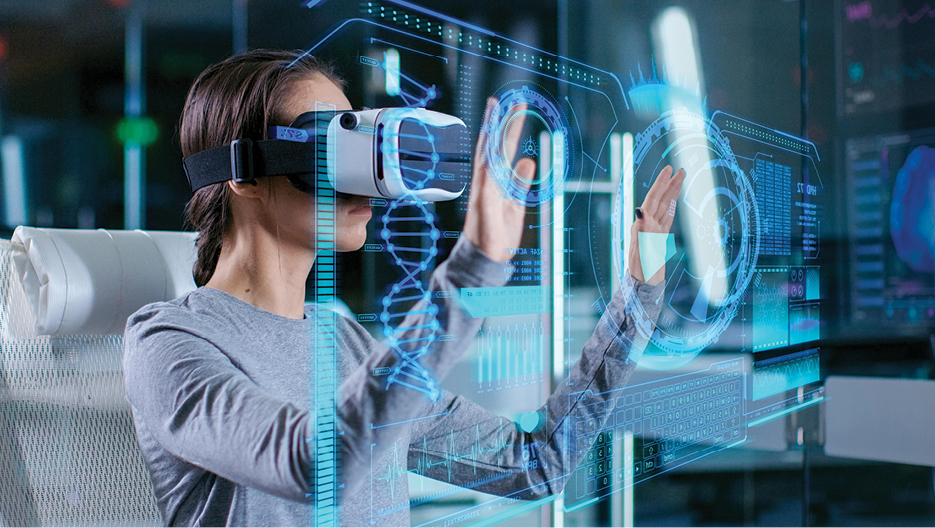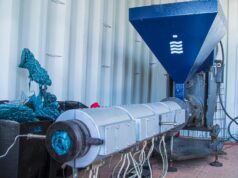In a world where technology continually evolves, businesses are constantly seeking innovative ways to engage consumers and promote their products. Virtual Reality (VR) technology has emerged as a game-changer in the realm of marketing and product promotion.
In this blog post, we will delve into the exciting world of VR and explore how companies are leveraging this cutting-edge technology in 2024 to create immersive and unforgettable product experiences.
What is VR Technology?
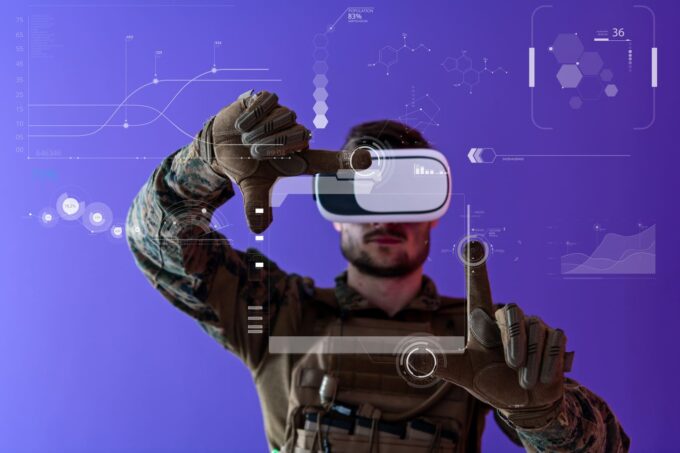
At its core, Virtual Reality (VR) is a technology that allows individuals to immerse themselves in a computer-generated environment that feels entirely real. This tech typically involves the use of a headset and often, hand controllers, to interact with this simulated world. It’s a technology that tricks our senses—sight, sound, and sometimes even touch—into believing that we are somewhere entirely different from our physical surroundings.
The Rise of VR in 2024
As we step into 2024, VR technology is experiencing unprecedented growth and adoption. The hardware has become more affordable and accessible to consumers, leading to a surge in popularity. Virtual Reality headsets are no longer niche gadgets but have found their way into households around the world.
This increased interest in VR is driven by various factors, including advancements in VR content creation, more immersive and realistic experiences, and the expansion of Virtual Reality beyond gaming into other industries. Companies are realizing that this tech has the potential to revolutionize how they connect with their target audience, and they are eager to explore its possibilities in product promotion.
VR in Product Promotion
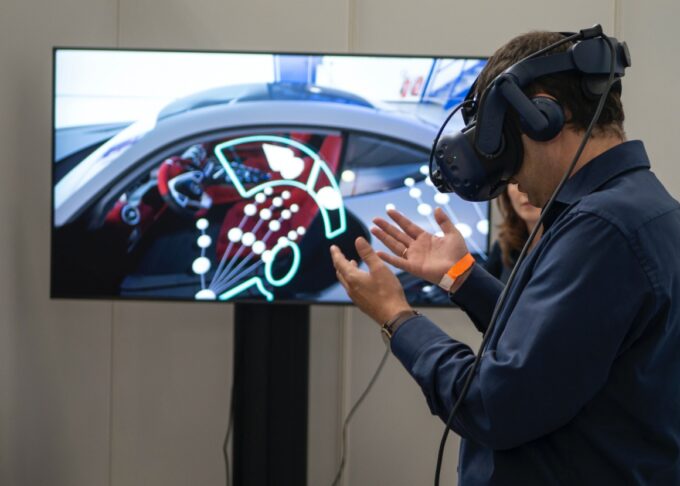
So, how exactly are companies using VR for promoting their products in 2024? The answer lies in the ability of Virtual Reality to create unparalleled immersive product experiences.
Imagine being able to step inside a showroom where you can examine and interact with products as if they were right in front of you. Car manufacturers are using VR to allow potential buyers to explore every detail of their vehicles, from the interior features to the engine components, without stepping foot in a physical dealership.
Retailers are using it to recreate their stores in the digital realm, enabling customers to browse and try on products virtually. Even in industries like real estate, VR is being harnessed to offer property tours, allowing prospective buyers to walk through homes from the comfort of their own living rooms.
Immersive Product Experiences
One of the most significant advantages of VR in product promotion is its ability to provide consumers with immersive experiences. Unlike traditional advertisements or online shopping, it allows customers to engage with products on a whole new level.
For instance, in the fashion industry, VR enables shoppers to virtually try on clothes and accessories, checking how they fit and look from every angle. This level of interactivity enhances the customer’s connection with the product, increasing the likelihood of a purchase.
Advantages of VR in Promotion
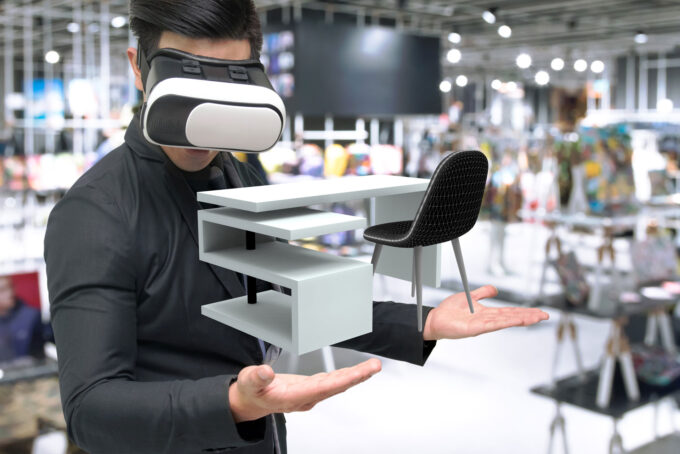
The use of VR in product promotion offers a plethora of benefits for companies seeking to engage their target audience effectively. Some of the key advantages include:
Enhanced Engagement: It captivates users and keeps them engaged for more extended periods, increasing brand exposure and message retention.
Increased Sales: Immersive VR experiences can lead to higher conversion rates as customers feel more confident in their purchasing decisions.
Global Reach: These tech promotions can reach a global audience, breaking down geographical barriers and expanding market reach.
Personalization: Companies such as SIA VR can tailor VR experiences to individual preferences, creating a more personalized and memorable interaction.
Data Insights: Virtual Reality platforms can collect valuable data on user behavior and preferences, enabling companies to refine their marketing strategies.
Cost Considerations
While VR technology offers numerous advantages, impl this hardware, software development, and content creation. However, as technology advances and becomes more widespread, the costs are gradually decreasing, making Virtual Reality more accessible to a broader range of businesses.
Accessibility and Adoption
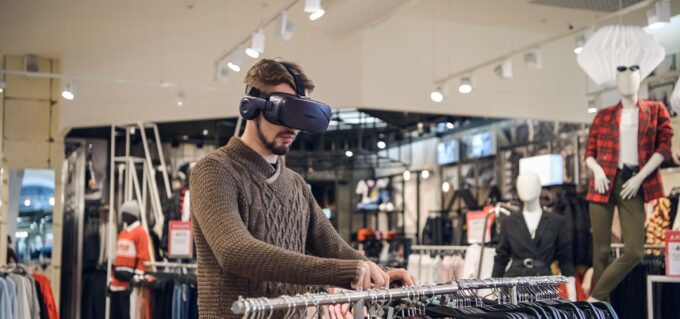
The accessibility of Virtual Reality technology to both companies and consumers is a critical factor in its growing prominence. Virtual Reality headsets are available at various price points, from affordable options for consumers to high-end devices for professional use. This range allows businesses to choose the level of immersion that suits their goals and budget.
Additionally, the software development community is actively creating Virtual Reality content and applications, making it easier for companies to find solutions that align with their marketing objectives. As VR becomes more mainstream, consumers are becoming increasingly comfortable with the technology, making them more receptive to Virtual Reality promotions.
Challenges and Limitations
While Virtual Reality holds immense promise for product promotion, it is not without its challenges and limitations. Some of the key obstacles include:
Cost Barriers: High-quality Virtual Reality experiences can be expensive to develop and may not be feasible for small businesses with limited budgets.
Technical Requirements: VR requires compatible hardware, which some consumers may not possess, limiting the reach of Virtual Reality promotions.
Content Quality: Subpar VR content can lead to a negative user experience, potentially harming a company’s reputation.
Motion Sickness: Some individuals may experience motion sickness or discomfort when using VR, which can deter them from engaging with Virtual Reality promotions.
Privacy Concerns: Collecting data from VR experiences may raise privacy concerns, requiring careful handling of user information.
Future Possibilities
As technology continues to advance, the possibilities for Virtual Reality in product promotion are boundless. Some potential future developments include:
Social VR Shopping: Virtual shopping experiences that allow users to shop with friends and family in a shared virtual environment.
Augmented Reality (AR) Integration: Combining Virtual Reality with AR to create even more immersive and interactive experiences.
VR Influencer Marketing: Partnering with Virtual Reality influencers to promote products and services in virtual spaces.
Easier Content Creation: Streamlined tools and platforms that make it easier for businesses to create Virtual Reality content without extensive development resources.
Personalized AI-driven Experiences: Using artificial intelligence to tailor Virtual Reality promotions to individual user preferences in real-time.
Conclusion
In conclusion, the future of product promotion is undoubtedly intertwined with the exciting world of Virtual Reality. The year 2024 marks a significant turning point as Virtual Reality technology becomes more accessible, affordable, and widely adopted. Companies that harness the power of Virtual Reality for their marketing and product promotion efforts stand to benefit from increased engagement, higher sales, and a competitive edge in a rapidly evolving marketplace.


